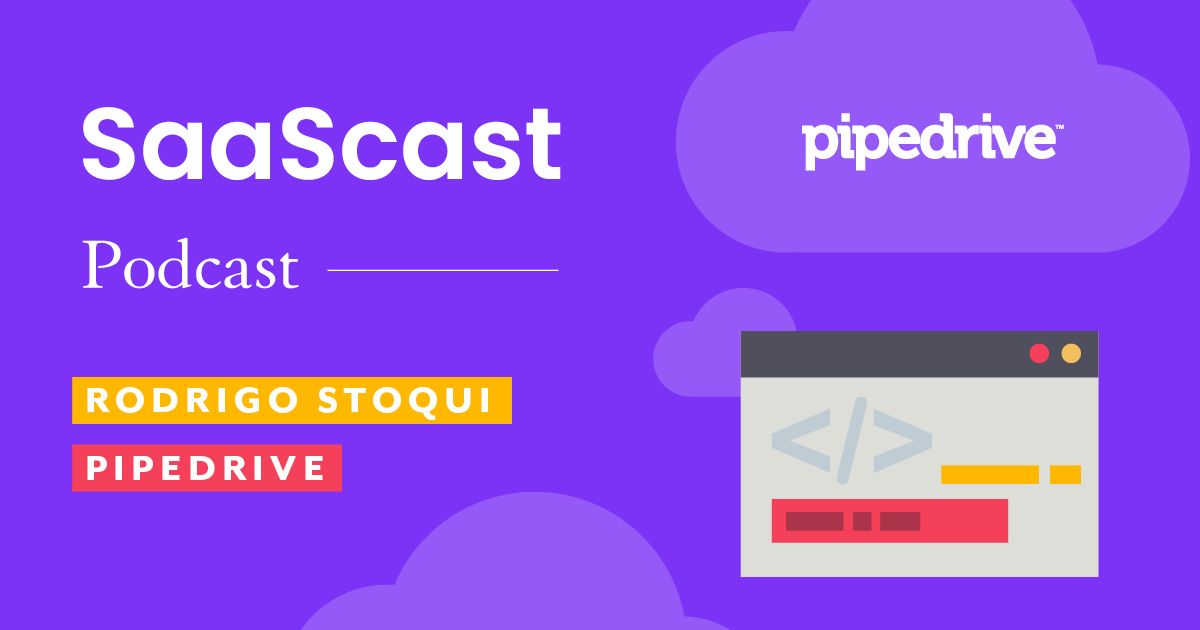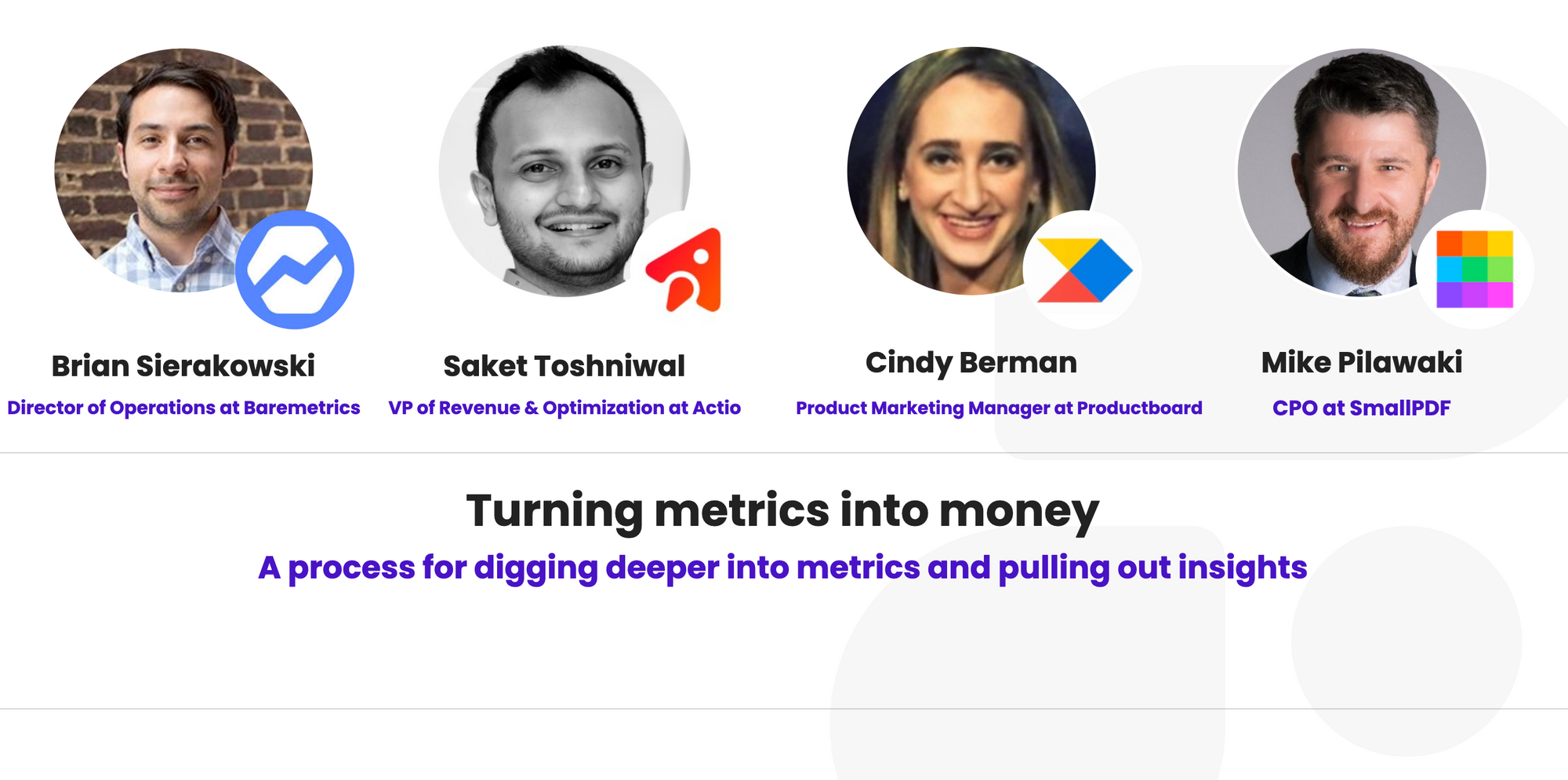It goes without saying that Saas orgs want to grow and scale, right? Whether you're a hot new startup, mid-growth, or a late-growth established brand, all SaaS orgs want their revenue to skyrocket.
But in order to scale, it’s essential that you have that time to take stock of your progress so far. Where your company has succeeded, and where your company is failing, can crucially inform your growth strategy going forward.
This is where metrics come in. Of course, like any revenue chasing org, SaaS companies are going to be concerned with the essentials: MRR, churn rate, retention rate, etc. But have you heard of customer activation rate or customer lifetime value, for example?
Whether you're looking to increase your CSAT, cut down on churn, pinpoint user activation, or all of the above, this guide is your one-stop-shop for all things SaaS metrics.
Monthly Recurring Revenue (MRR) vs Annual Recurring Revenue (ARR)
Monthly recurring revenue (MRR) and annual recurring revenue (ARR) are separate but inextricably linked. MRR is calculated monthly on a micro-scale and ARR is calculated annually on a macro scale.
Using these two metrics in tandem can crucially inform your company roadmap and product planning. The data you gain can be used to predict revenue, which in turn, can be used to plan for new product features, as well as how you plan out your company’s budget.

How a SaaS company distributes its budget can have a serious knock on effect on revenue, as a misspent budget can lead to a failure to convert new customers, a fall in retention, or a higher churn rate. Let’s say, for example, a company invests in a complicated new feature that turns customers away from your product.
Measuring ARR enables you to see year-over-year progression – a great way to measure the effect of a long-term strategy, while MRR delves deeper on a month-to-month basis, which is a great way to measure the effects of any immediate changes to features or pricing.

As a SaaS leader, you have to have a long-term vision, but you have to be able to pivot quickly if a plan isn’t working. Balancing these two essential metrics can enable you to do this.
Customer-centric metrics
According to Gallup, customers are far more likely to pay for a service that they feel an emotional connection to. If SaaS leaders want customers to stick around it’s essential that they keep track of customer engagement levels throughout the customer journey
But there are many different ways to measure how happy customers are with your product. We’ve delved deeper into some of them here.

User Activation
If a user doesn’t activate, the chance that they’ll convert and stick around is minimal. But how do you know they have actually become activated?
And what is ‘activation?’ It refers to that golden moment when users discover the true value in your product. The ‘aha!’ moment. We know what you’re thinking – isn’t this all just splitting hairs? Can’t you get a good grasp on whether users are discovering the value in your product from, say, the CSAT or the NPS?

This is true, but what’s also undeniably true is that many users – especially if they’re not being a hundred percent honest in their feedback – won’t be inclined to go into detail about what exactly they find valuable in your product. This can be especially true for a SaaS product, where the users are often separate from the buyers.
That’s why it’s great to have a metric that delves specifically into the exact value that users are finding. This is an invaluable metric for measuring whether your product actually matches up to your marketing strategy, and to the vision for your company overall.

You can track user activation by creating highly personalized customer profiles for users, which keeps track of the milestones being accomplished, as defined by the customer themselves.
Having a log of how each individual customer is interacting and finding value in your product can be of tremendous value in terms of forming strong bonds with customers.
Craig Zingerline, Co-Founder and CEO at Growth University, has this to say about activation rate:
“What is each and every touch point with your user, and what are you doing to both add value and move them to the next stage in the journey? I call this the 'next step activation' goal, and there is usually more than one step.”
Customer Satisfaction Score (CSAT)
Customer satisfaction score (CSAT) is a metric used to measure a customer’s satisfaction with a particular aspect of a product, point in their user journey, or their overall customer experience.
It’s not enough to have a slick product if that product doesn’t address specific user needs. It’s also not enough to interact with customers during onboarding if you can’t incorporate feedback and adjust your strategy based on that.

CSAT should also be assessed after every interaction that your team has with the customer. If, for example, you send out an email to gauge customer satisfaction after every interaction, you can get a good measure of how customers feel about their relationship with your org.
If this proves to be sub-par, you can invest in customer service training for your team. The product is important, sure, but your team, and how they engage with customers, is an essential part of your brand.
Customer satisfaction score is of course quite separate from…

Net promoter score (NPS)
It’s all good and well if a customer says they’re happy with your product, but the real test of your value is whether they're likely to recommend your service to others. Broadly speaking, it measures loyalty and the general perception of your brand.
Considering the high cost of customer acquisition, referrals from existing companies can be extremely profitable for SaaS orgs.

SaaS companies that focus entirely on relentless growth rather than on building trust with customers are potentially missing out on relatively cheap– and therefore profitable– channels for acquiring customers, and ensuring that they can get the most value out of the customers they have.
Joseph D Mansueto, CEO at Morningstar, highlights the value of customer loyalty:
“Once you create a loyal customer base, it’s difficult to take that away.”
Customer engagement score
How are customers using your product and how much does it factor into their day-to-day lives? Is your product a utility? Are users using it mainly for all of their world correspondences and tasks, or are they using it simply for very specific tasks that only need to be accomplished occasionally?
On the other hand, are customers using it for social interactions? With platforms like Slack, for example, it can be both. In which case, it can give you a lot of scope in terms of how to position your product.

This is really one of the chief benefits of a customer engagement score. It can help you to be super specific in terms of how you position and market your solution. Engagement scores might also indicate that users are missing or overlooking some of the uses of your product, so you can be aware of how to fill gaps in user knowledge when you're reaching out to existing customers.
But there are other kinds of engagement apart from product usage. Consider the following:

Marketing engagement: Is the customer attending events and webinars? If so, this can be a great tool for recruiting customers as ambassadors for your org.
Community engagement: Does your org have a community channel, where users and customers can sing your company’s praises from the rooftops? This can be a major conversion tool
Rahul Mirchandani, SVP of Product and Revenue at Dream 11, emphasizes the importance of appealing to your existing customers:
“Digital brands do need to invest in rapidly scaling their user base, but helping customers fall in love with your brand through non-intrusive and value-adding engagement is a whole different ball game.”

Churn Rate & Retention Rate
Although intrinsically linked, churn rate and retention rate are polar opposites. Your churn rate refers to the number of customers or subscribers who canceled or failed to renew their subscriptions during a given period.
Your retention rate is the number of customers you’ve managed to keep over a period of time. These are critical metrics for any SaaS business: if your customer doesn't stick around long enough for you to at least recover your customer acquisition cost, you’re in trouble regardless of monthly revenue.
Let’s look deeper into how to act on these two types of metric. 👇
Customer churn
Don’t treat it as a generic headcount of the customers who’ve left you. By having these churned customers segmented into their personas, for example, you can open the door for your churn rate informing your long-term strategy.
Why are you failing to reach a certain demographic? Are your marketing channels weighted disproportionately in favor of one particular persona rather than another?

You need to have a conversation about whether these segments are actually worth your while. SaaS orgs can overspend considerably on trying to appeal to folks that are a lost cause.
It can be better to cut your losses and pivot to another strategy rather than keep trudging on towards a dead end.
Revenue churn
It’s important to keep this separate from customer churn because the two aren’t exactly the same, and yet they do undeniably inform each other. Yes, it’s reasonable to predict that a loss of customers will naturally lead to a loss of revenue, but it can help to really dig into the nitty gritty of exactly how it’s affecting your revenue.

For example, some SaaS buyers are going to be buying up multiple seats for their org. This is especially true if your company is B2B. A churn in buyers, in this case, is likely to lead to a far greater loss in revenue.
Keep your revenue and customer churn separate yet aligned in order to keep a firm grasp on how the two are affecting each other.
Customer cost and value
As you’ve probably heard, most SaaS companies fail in their first year. There are many reasons for this, but one of the main reasons is there’s more money being spent than revenue generated.
This is, of course, understandable. All SaaS companies want to scale and grow, and it can be tempting simply to throw money at maximizing conversion.
Companies that fail to understand why their company is making a loss very possibly don’t have a firm grasp on their metrics.
A good grip on customer acquisition cost (CAC) vs customer lifetime value, for example, can reveal where you’re overspending and where funds would be better distributed elsewhere. Let’s dig deeper into these metrics below.

Customer acquisition cost
This defines how much it’s costing to attract new customers vs how much value the customer is actually providing in terms of revenue.
This is a vital metric for new startups, in particular, because new SaaS startups are focused understandably on scaling quickly, but this must always be tempered by mindfulness of what this is costing your org.
Early startups are looking to become profitable as quickly as possible, but if your efforts at scaling are losing you more revenue than you’re gaining, your new startup gets cut down at the root.
Orgs can cut down their CAC by using very targeted marketing to reach customers that are likely to sign up, and more importantly, those that are more likely to convert to paying customers.
Here’s how Jay Samit, former vice chairman at Deloitte defines this:
“Targeted marketing delivers a lower customer acquisition cost and gets you to profitable growth faster. The goal is to quickly identify the costs associated with acquiring your most profitable segment of customers and the incremental value - if any - of going beyond your core”
The aim is for CAC to decrease over time, and customer acquisition is inevitably going to cost you more than it's gaining early on. But decreasing this number is reliant on another key metric. You need to look into…

Months to recover Customer Acquisition
This is really a sub-strand of customer acquisition. You need to define how long it’s taking for your growing org to cover the cost of acquiring a new customer.
The lower this number, the more profitable your customer acquisition efforts.
Paying attention to this number can reveal weak links in your strategy. For example, sales reps are expensive. Are you relying too much on sales reps to get customers through the sales funnel?
SaaS companies are in a privileged position in that customer activation can occur very quickly once the customer has signed up to the platform. Users can choose a plan that’s right for them and get started that very day.
The faster customers are able to get started, the faster you can make up your user acquisition cost. If this metric is lagging, it might also be an indication of other issues:
- Maybe the messaging on your site isn’t making the value of your product clear.
- Maybe you’re targeting the wrong ICP, and you need to re-think your personas.
- Maybe you’re not working hard enough on upselling to customers who are signed up to a freemium package.

Customer lifetime value
CLV measures the value of a customer to your company across the whole of the customer journey. If, for example, it turns out that customers are less likely to purchase new features after the first year of signing up to your product, your CLV will indicate this.
This can then have massive implications for your long term strategy going forward. We don’t want to sound like a broken record, but aggressive customer acquisition strategies can be a major reason why early-growth SaaS startups fail; it can be far more lucrative for orgs to invest more in the customer that they have.
The holy grail is to ensure that your CLV is much higher than your CAC.
By making sure they’re engaged, that they feel valued and that they’re aware of how they can get more out of your product the more they engage with it, Saas orgs can get the most value out of their existing customers.
If your CLV is low, consider the following:
- Is your org continuing to engage with customers once they’ve been acquired
- Are you using the right marketing channels to engage with existing customers
- Is your messaging convincingly stressing the long-term benefits of your product
Here’s what Jeremy Coates, business thought leader, says about CLV:
“The business that is willing and able to outspend its competition to acquire a new customer won't always win as some people say. Unless they are continually reducing their lead costs while raising the customer lifetime value at the same time.”

Customer renewal rate
For a SaaS org, the power is in the hands of the customer, meaning that with a subscription-based model, customers can simply choose to cancel at any time they wish.
In order to combat this, SaaS orgs have to ensure that they aren’t overspending on customer acquisition and are ensuring that existing customers feel valued – and more importantly – are valuable to you.

A poor renewal rate can be an indication of a pretty shaky strategy. Is your C-suite too focused on growth and not focused enough on calibrating and strengthening what you already have? And not focused enough on crucial factors like:
- Customer loyalty.
- Visibility.
- Brand awareness.
- Customer advocacy.
The onus is on SaaS to give customers a reason for renewing their subscription. Don’t rest on your laurels. Discover the value of your SaaS product through SaaS metrics!
Enjoyed this article? Find out what other exclusive insights we have to offer with a Future of SaaS membership.






